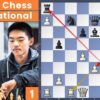In the world of elite golf, where meticulously manicured private courses often serve as the battlegrounds for major championships, Bethpage Black stands as a magnificent anomaly. Nestled in Farmingdale, New York, this publicly owned course proudly greets every golfer with a stark, unmistakable message: “WARNING — Bethpage Black is an extremely difficult course which we recommend only for highly skilled golfers.” For the 2025 Ryder Cup, this isn`t just a sign; it`s a declaration of war, a promise of an unparalleled challenge awaiting the best of Team Europe and Team USA.
The Architect`s Craft: Taming a Wild Beast for Golf`s Grandest Stage
The course`s legendary difficulty isn`t accidental. Unlike many championship venues designed with the everyday member in mind, Bethpage Black was conceived without such constraints. Its purpose was to test, to demand precision, and to punish imperfection. Famed golf course architect Rees Jones, who has overseen multiple redesigns of Bethpage Black, articulates this philosophy with clarity: “There`s a lot of thinking players have to do, especially off the tee… This is a penal golf course, but there`s also a lot of strategy.”
Jones`s insights reveal a course that eschews the trend of widened fairways and removed trees. Instead, Bethpage Black retains its formidable character, forcing golfers to consider every shot as a strategic puzzle. For the Ryder Cup, Jones`s touch is crucial, not to soften the course, but to fine-tune its challenges, ensuring that the spectacle remains thrillingly unpredictable.
Public Pedigree, Private Punishment: Bethpage Black`s Unique DNA
The idea of a municipal course hosting one of golf’s most prestigious team events might seem unusual. Yet, this public accessibility is precisely what makes Bethpage Black so compelling. It`s a course forged in the fires of everyday play, where a mere $130 green fee grants the average enthusiast the chance to walk the same fairways as legends like Tiger Woods, who famously conquered it en route to a U.S. Open victory in 2022.
This public heritage means the course isn`t built for comfort; it`s built for character. Its undulating greens, punishing bunkers, and strategic doglegs demand respect, a quality that will be amplified tenfold under the immense pressure of the Ryder Cup. The “warning” sign, in this context, becomes less about discouraging amateurs and more about setting the stage for the ultimate professional test.
Ryder Cup Dynamics: Match Play on a Monster Course
The Ryder Cup`s match-play format introduces an entirely different dynamic to Bethpage Black. Unlike stroke play, where every shot counts towards an individual`s cumulative score, match play allows for more aggressive, risk-reward strategies. A disastrous hole might lose a point, but it doesn`t derail an entire tournament. This encourages daring plays, heroics, and, inevitably, spectacular failures.
Team captains, such as Team USA`s likely leader Keegan Bradley, will be looking to set up the course to maximize excitement and leverage their players` strengths. Expect pin positions designed to encourage birdies, even on Bethpage`s formidable greens. “They are going to set it up a little more gently. They want to see birdies, and they want some excitement,” Jones notes, hinting at a strategic softening that still retains the course`s inherent bite.
A Strategic Odyssey: Navigating Bethpage`s 18 Challenges
Let`s take a closer look at a few of the holes that will define the 2025 Ryder Cup, understanding that each presents a unique strategic dilemma:
The Early Dance: Birdie Opportunities and Tactical Choices
- Hole 1 (Par 4, 397 yards): Despite being a “not hard” hole by championship standards, its narrow green entrance demands a cautious approach. In foursomes, expect careful lay-ups, while in four-ball, one brave soul might attempt to “go for it” over the trees, setting the tone for the day.
- Hole 4 (Par 5, 517 yards): Famously the second-easiest hole for pros despite being one of the hardest for amateurs. This short par five, playing as a par four for the Ryder Cup, is a prime birdie opportunity. The pros` ability to carry the deep glacier bunker means they`ll be aggressive, but the green`s front-to-back pitch demands precise approach shots to avoid a chipping area.
Where the Black Beast Shows Its Teeth: The Gauntlet Unfolds
- Hole 5 (Par 4, 478 yards): “Where Bethpage starts to show its teeth,” according to Jones. This hole, reminiscent of Pine Valley`s 16th, forces players to flirt with a massive sandy area on the right to avoid being blocked by trees on the left. An elevated, heavily bunkered, and undulating green makes par a commendable score.
- Hole 7 (Par 4, 524 yards): Once a par five, this hole was controversially converted to a par four for the 2002 U.S. Open, sparking player “whining.” Its sharp dogleg and encroaching trees on the right make the drive crucial, demanding a daring flirtation with the tree line for a shorter approach shot. It`s a testament to Bethpage`s designers that a hole designed to elicit complaints is still a fan favorite for its sheer difficulty.
- Hole 10 (Par 4, 502 yards): The infamous hole where Sergio Garcia`s frustration boiled over in 2002. Formerly unhittable fairways (due to rough and wind) have been adjusted, but bracketed by bunkers, this remains a stern test. It marks the beginning of “the meat of the golf course,” a brutal stretch from holes 9 to 12.
- Hole 15 (Par 4, 477 yards): Unanimously declared “the hardest hole in the golf course” by Jones. Despite no fairway bunkers, its severely contoured, two-tier green, perched high with three substantial bunkers, demands an incredibly precise second shot. Missing right means a difficult recovery from a steep slope – a true test of nerve and skill.
The Nerve-Wracking Finish: “Muscle-Tightening” Moments
- Hole 17 (Par 3, 179 yards): A “dramatic, wonderful par three” that lives up to its billing. With a two-tier green, heavily bunkered, and not very deep, it’s a hole where “muscles tighten” as matches come down to the wire. The precision required to find the correct tier under pressure will be immense.
- Hole 18 (Par 4, 411 yards): A “real birdie opportunity” yet fraught with danger. Bracketed by bunkers, players must weigh the risk of hitting driver against a safer lay-up that still demands precision. Scottie Scheffler and Rory McIlroy, among others, relish this type of strategic finish, where thoughtful execution off the tee is paramount to setting up a final flourish.
The 2025 Ryder Cup at Bethpage Black promises more than just a golf tournament; it offers a compelling narrative of human endeavor against a course designed to push the limits of skill and mental fortitude. From its humble public origins to its current status as a championship crucible, Bethpage Black continues to earn its fearsome reputation. As Team Europe and Team USA prepare to do battle, the iconic “WARNING” sign will serve not just as a deterrent, but as an exciting prelude to golf`s ultimate strategic showdown.








